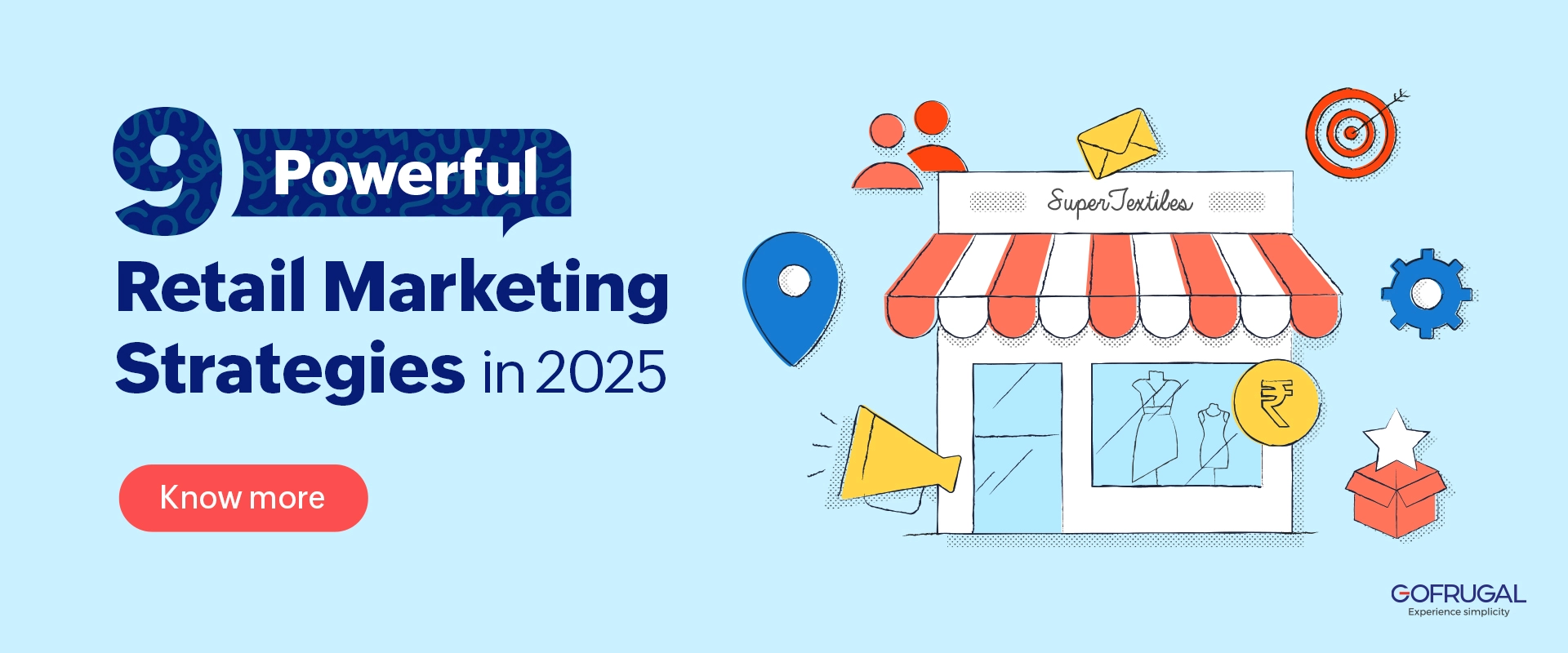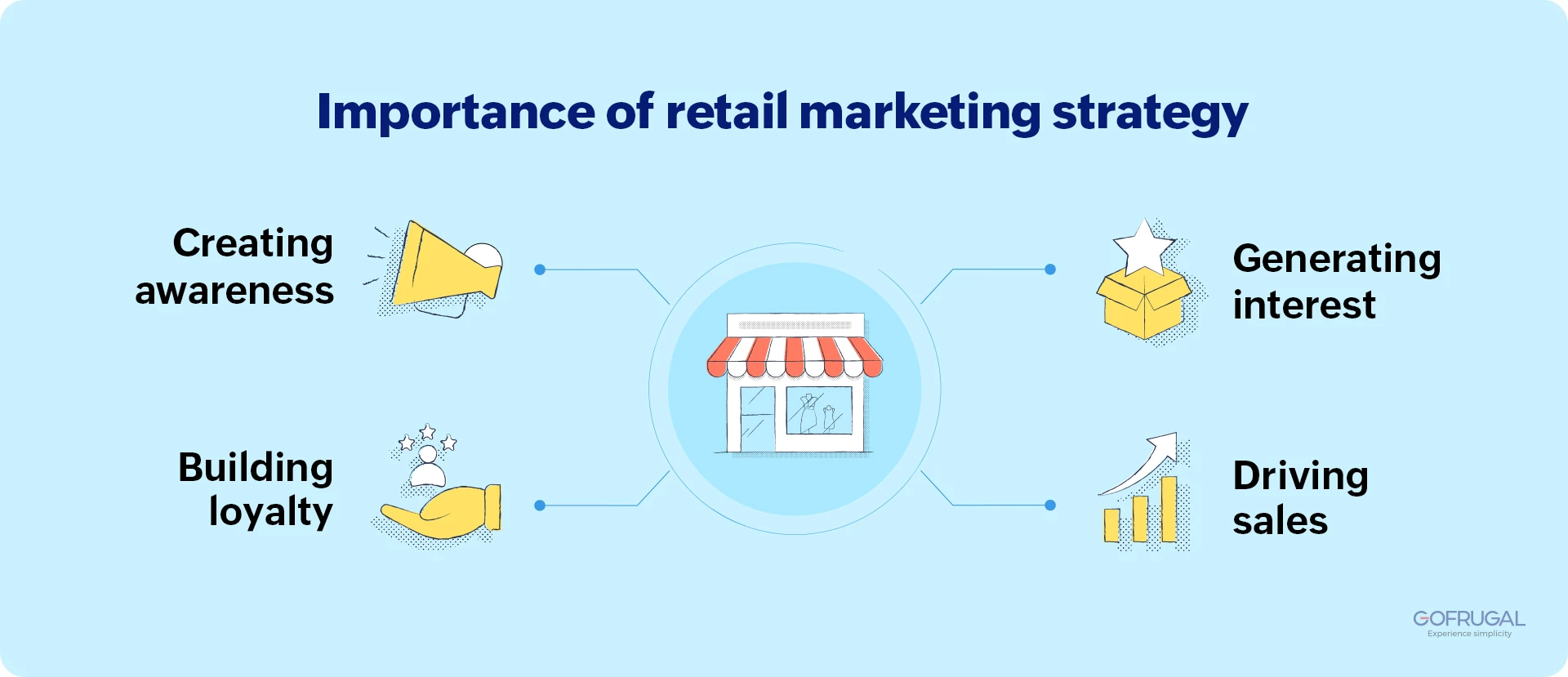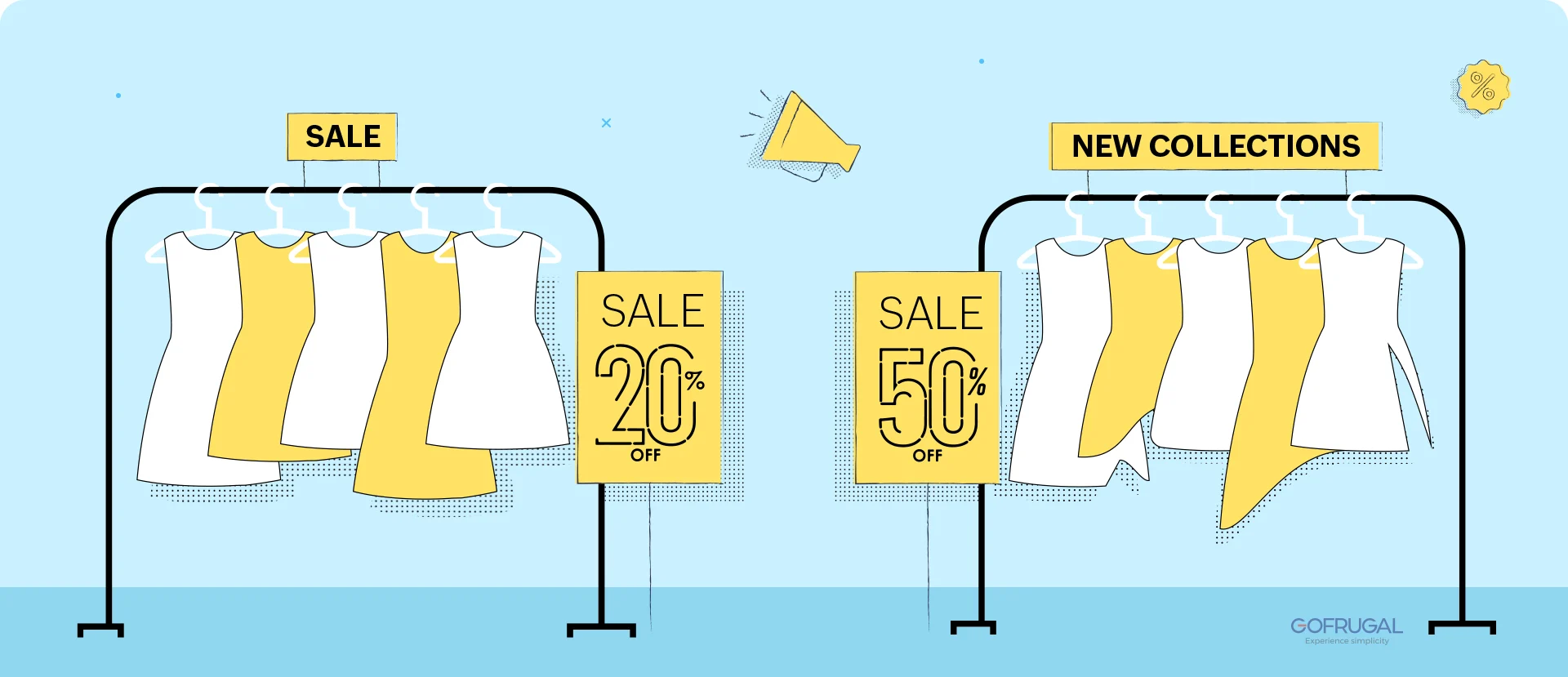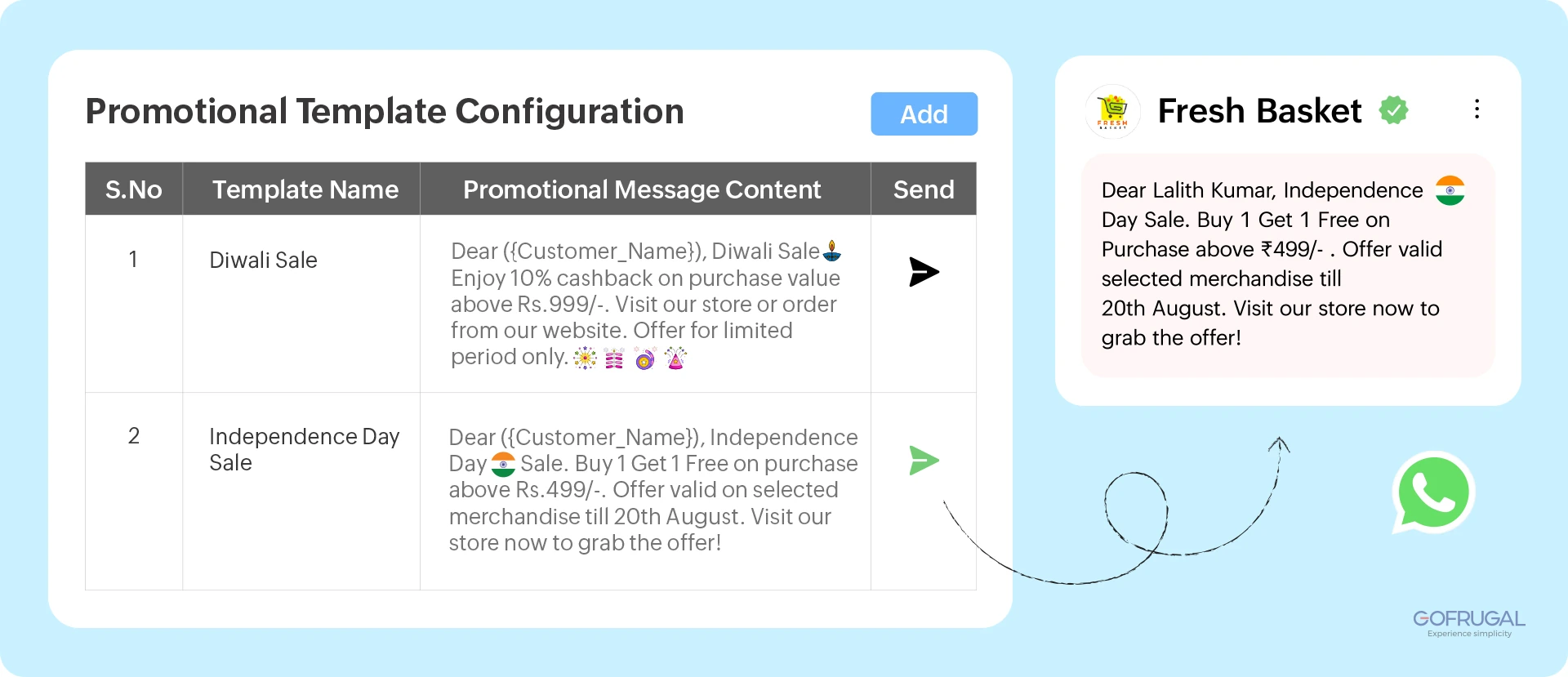Success in retail today means more than just stocking good products. It requires a robust marketing strategy that connects with customers and keeps them engaged. By knowing your audience, providing exceptional experiences, and using data wisely, you can make your store a popular destination. Whether you're running a local boutique or an online tech shop, the right marketing tactics are essential. This blog explores the vital aspects of a retail marketing strategy and how using the right tools can elevate your business.
Contents:
- What is a retail marketing strategy?
- Importance of a retail marketing strategy
- Benefits of having a robust retail marketing strategy
- 9 ways to build an effective retail marketing strategy
- How Gofrugal helps retailers plan effective marketing strategies
- Customer case study
What is a retail marketing strategy?
A retail marketing strategy is a comprehensive plan designed to promote and sell products or services to customers in the retail sector. It encompasses various techniques and approaches tailored to attract and retain customers, enhance brand visibility, and ultimately boost sales. At its core, a retail marketing strategy aligns your business goals with the needs and behaviours of your target audience.
Importance of a retail marketing strategy
Marketing is the driving force behind the success of any retail business. It bridges the gap between what the retailer offers and what the customer wants. Here’s how marketing contributes to retail success.
Creating awareness
Retail marketing helps make customers aware of your products and services. This is the first step in attracting potential buyers. Using various retail marketing strategies, you can ensure your products reach a wide audience.
For example, distributing printed materials in nearby neighbourhoods and placing advertisements in local newspapers to promote weekly and exclusive deals can significantly increase the supermarket's presence and attract local customers.
Generating interest
Effective retail marketing strategies engage customers and spark their interest in your offerings. This can be achieved through eye-catching advertisements, informative blogs, or engaging social media posts.
For example, a textile store owner can create attractive and thematic window displays that showcase new arrivals, festive collections, or special offers to catch the eye of passersby.
Driving sales
Ultimately, the goal of retail marketing is to convert interest into sales. By highlighting the benefits and unique features of your products, marketing convinces customers to make a purchase. Retailers can use limited-time offers to create urgency, showcase customer testimonials in-store to build trust, and offer extended warranties or free service packages as an added incentive for purchasing electronics. Supermarkets can implement "Buy one, get one free" deals to drive sales.
Building loyalty
Beyond initial sales, retail marketing plays a crucial role in building customer loyalty. Regular engagement through email marketing, loyalty programs, and excellent customer service keeps customers coming back.
For instance, supermarkets can have customers register their mobile numbers to earn points on each purchase, which can be tracked and redeemed during checkout without needing a physical card.
Benefits of having a robust retail marketing strategy
A robust retail marketing strategy offers numerous benefits that contribute to the overall success and growth of your business. Here are some key advantages.
Increased visibility
A strong retail marketing strategy ensures your brand is visible to a larger audience. This includes both online and offline channels, helping you reach potential customers wherever they are.
For example, a footwear store could run targeted Instagram and Facebook ads showcasing their latest shoe arrivals to local customers within a 10-mile radius. They could also partner with local gyms or sports clubs to promote their athletic shoe range.
Competitive edge
By understanding and leveraging different types of retail marketing strategies, you can differentiate your brand from competitors. Whether it's through unique branding, targeted promotions, or superior customer service, a solid strategy sets you apart.
For example, a pet store could specialize in natural, organic pet foods and eco-friendly pet products. They might also offer pet grooming services, training classes, and pet adoption events, creating a one-stop shop for all pet needs and fostering a community feel.
Enhanced customer understanding
Retail marketing strategies are built on a deep understanding of your target audience. This knowledge allows you to tailor your products, services, and communications to meet their needs effectively.
For example, a home decor store could track customer purchases and preferences through a loyalty program. They can use this data to send WhatsApp campaigns with recommendations for new arrivals that match each customer's decor style determined by past purchases.
Better resource allocation
You can allocate your marketing budget more effectively with a clear retail marketing strategy. This ensures your resources are used where they can have the most significant impact.
For example, a boutique analyzes sales data to find that their Instagram promotions generate more sales than print ads. They can then allocate more of their marketing budget towards Instagram influencers and less on traditional advertising.
9 ways to build an effective retail marketing strategy
Creating a successful retail marketing strategy involves understanding your market, crafting a strong brand identity, and implementing various marketing tactics to engage customers. Here's a step-by-step guide to help you build an effective retail marketing strategy.
1. Understanding the market and crafting brand identity:
- Focus on direct interactions with your customers. Talk to them in-store, conduct informal surveys during checkout, or gather feedback through simple comment cards.
- Define your ideal customers based on demographics (age, gender, income) and psychographics (lifestyle, values, interests). Use this information to tailor your marketing efforts and product offerings to meet their needs.
- Highlight the distinctive benefits and features of your products or services that set you apart from competitors.
- Communicate your unique selling proposition (USP) clearly through all marketing messages to ensure customers understand your brand's value.
- Create a cohesive visual identity with a consistent logo, colour scheme, and typography. Establish a brand voice that reflects your brand's personality and resonates with your audience.
- Maintain consistent branding across all channels to build recognition. Engage with customers regularly to foster loyalty and trust, and continuously improve your USP based on feedback and market response.
For example, the owner of a traditional Indian saree shop discovers that customers prefer sarees with intricate embroidery and vibrant colours. They curate a selection of such sarees and showcase them on Instagram and Facebook, maintaining a consistent traditional brand image. This approach builds strong brand recognition and loyalty both online and offline.
2. In-store marketing tactics:
- Design your store to be easy to navigate with appealing displays and signage, ensuring a pleasant shopping experience.
- Train staff to be friendly and knowledgeable, enhancing the shopping experience and addressing customer needs effectively.
- Arrange products strategically using end caps, eye-level shelves, and themed sections to attract attention and encourage purchases.
- Draw customers in with product launches, demonstrations, or seasonal celebrations, creating memorable experiences.
- Offer discounts, special deals, and limited-time offers. Advertise these promotions through various channels to boost foot traffic and sales.
For instance, a clothing store highlights traditional outfits and accessories at the entrance during the festive season. Staff suggest matching jewellery and footwear to enhance the shopping experience. The store hosts in-store events and special discounts, advertised through local newspapers and WhatsApp groups, keeping customers engaged and eager to return.
3. Personalization and customer engagement:
- Gather data on customer preferences, purchase history, and behaviour. Use this information to tailor your marketing efforts.
- Create personalized offers and messages based on customer data. This can include targeted emails, personalized product recommendations, and customized promotions.
- Refine your personalization tactics based on new data insights. Stay flexible and continuously improve your marketing strategies.
- Implement loyalty programs that reward repeat customers. Offer points, discounts, or exclusive access to new products.
- Use customer data to create offers that match their interests and needs. Personalized offers can significantly increase customer engagement and loyalty.
For example, an Indian grocery store tracks customer purchases and notices frequent buyers of organic products. They send personalized offers and healthy recipes to these buyers via WhatsApp and implement a loyalty program with points redeemable for discounts. This approach enhances customer satisfaction and boosts repeat purchases and loyalty.
4. Referral programs
- Offer incentives for customers who refer friends to your store. This can include discounts, free products, or rewards points.
- Use a system to track referrals and ensure customers receive their rewards. This can be done through referral codes, online forms, or loyalty program integrations.
- Provide attractive incentives to encourage referrals. Ensure the rewards are valuable enough to motivate customers to participate.
- Advertise your referral program on your website, social media, and in-store. Make it easy for customers to learn about and participate in the program.
For example, a coffee shop owner encourages customers to refer friends with a card offering a free coffee after five referrals. Referred friends get a discount on their first purchase. Referrals are tracked easily through a simple form on the coffee shop's website.
5. Social proof:
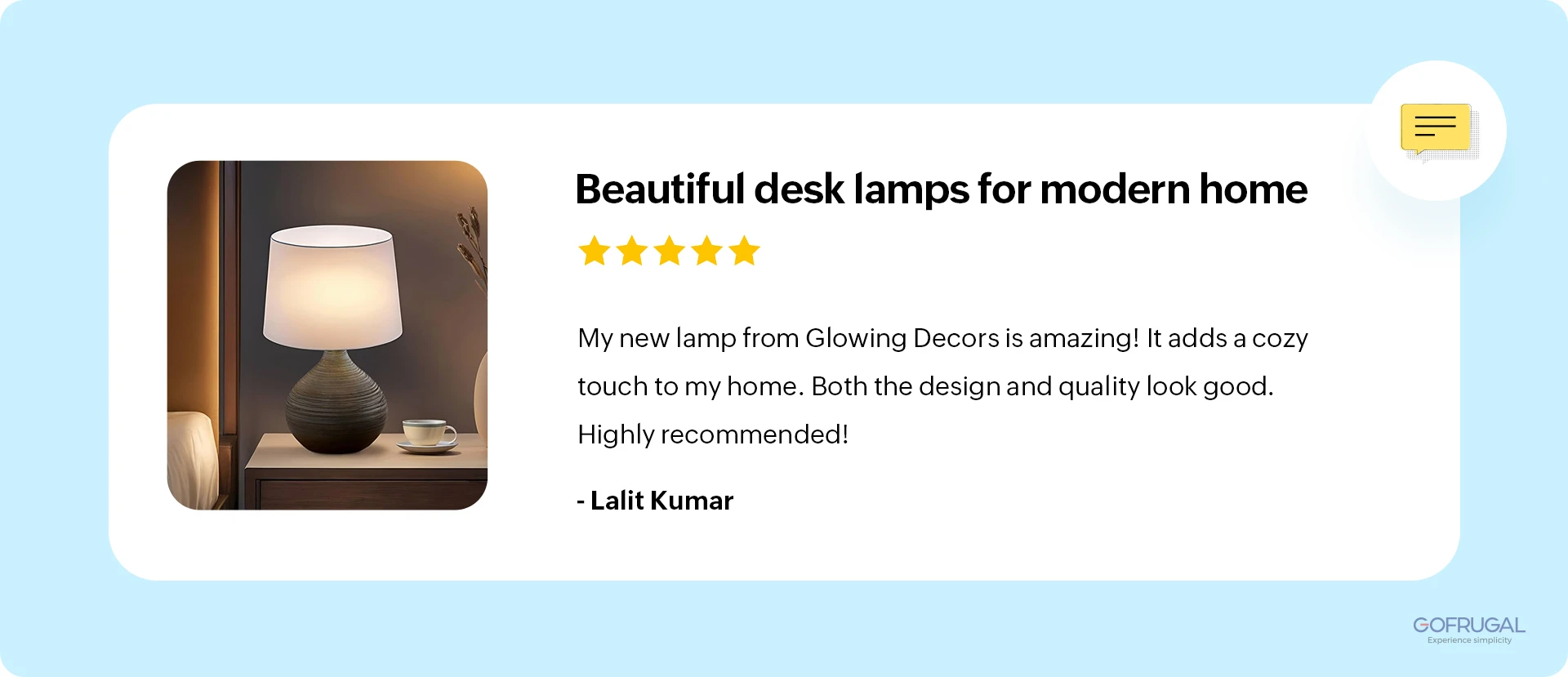
- Encourage satisfied customers to leave reviews. Display these reviews prominently on your website and in marketing materials.
- Include customer testimonials in your ads, social media posts, and emails. Positive feedback from real customers can build trust and credibility.
- Motivate customers to share their experiences with your products on social media. User-generated content adds authenticity to your brand.
- Monitor and respond to online reviews. Engage with customers on social media to build a community around your brand.
For example, a customer praised Gofrugal ERP as the best for supermarkets. The company highlights these reviews on their website and social media. They also encourage customers to share success stories and photos using a branded hashtag, creating a loyal and engaged community.
6. Developing a multichannel marketing strategy:
- Determine which channels your target audience uses most. This can include social media, email, WhatsApp, and physical stores.
- Integrate your online and offline marketing strategies for a cohesive approach. Ensure your messaging and branding are consistent across all channels.
- Maintain a consistent brand image and message across all platforms. This helps build brand recognition and trust.
- Ensure customers have a smooth experience when moving between online and offline channels. This can include unified promotions, consistent branding, and seamless service.
- Adjust your channel strategies based on performance and trends. Stay flexible and responsive to changes in consumer behaviour and market conditions.
For example, a clothing store uses WhatsApp to send promotional messages and Instagram for targeted ads showcasing new arrivals. They ensure their branding—such as their logo, colors, and tone of voice—is consistent across WhatsApp messages, Instagram posts, their website, and in-store displays. This consistency helps build brand recognition and trust.
7. Leveraging digital marketing:
- Use words people often search for to make your website easier to find. Create interesting and useful content for your site.
- Create accounts on social media platforms where your customers spend time. Post updates regularly and talk to your followers, sharing news, promotions, and customer photos.
- Keep up with changes on social media platforms and how people use them. Adjust your posts to stay interesting and effective.
- Gather email addresses from your website, in-store, and social media. Send targeted and relevant messages to different groups of customers.
- Collaborate with popular social media personalities who match your brand to reach more people. Partner with other businesses for joint promotions.
For example, an organic food store partners with health influencers on Instagram to promote products and share healthy recipes. They engage customers on social media with nutrition tips and testimonials. The store collects customer details online, sending targeted WhatsApp campaigns with exclusive offers and health tips.
8. Mobile marketing:
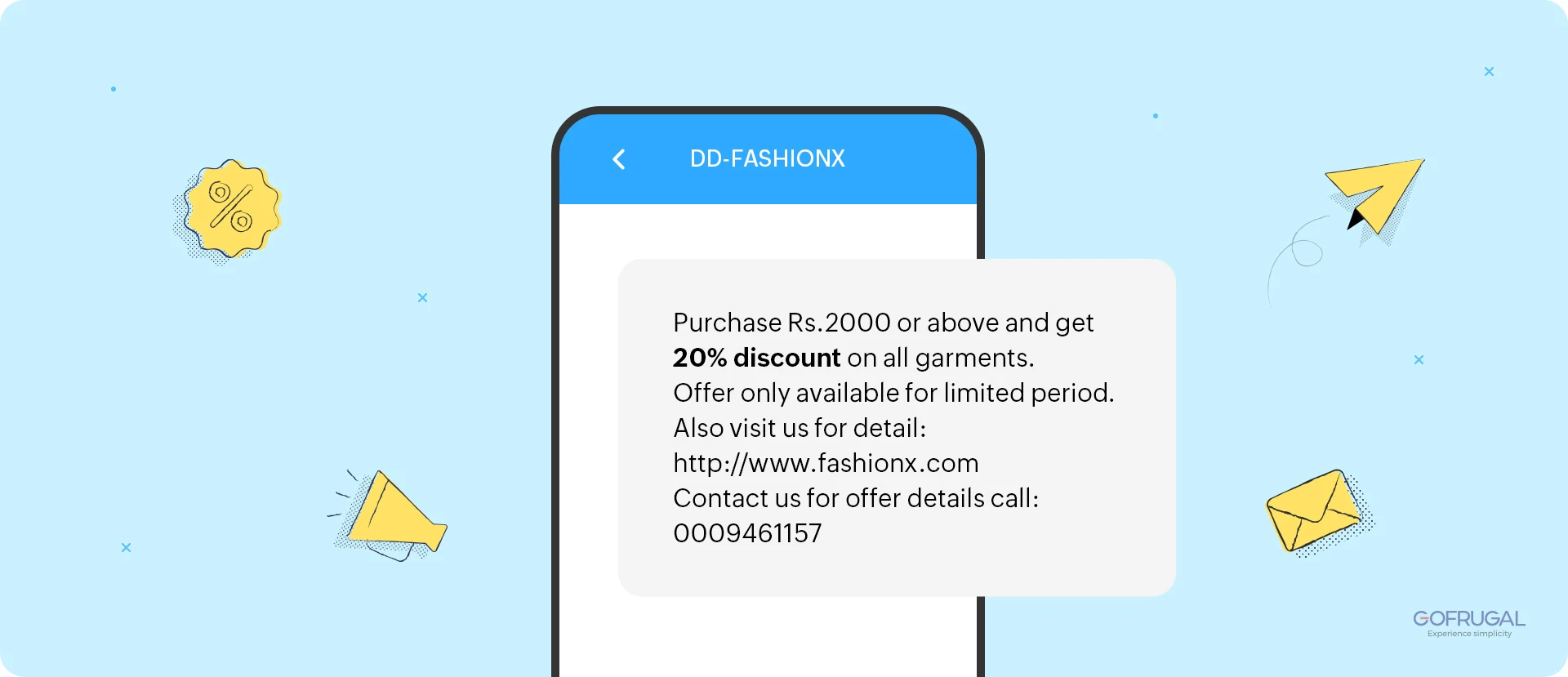
- Send targeted SMS messages to your customers. This can include promotions, updates, and reminders.
- Create a mobile app to enhance customer engagement. Promote the app through your website, social media, and in-store.
- Utilize geofencing technology to send targeted messages to customers near your store. This can drive foot traffic and increase sales.
For example, a clothing store owner sends SMS messages to customers with special offers and reminders about new arrivals. The store also has a mobile app where customers can browse the latest collections, make purchases, and earn loyalty points for discounts on future purchases.
9. Measuring and analyzing your marketing efforts
- Focus on simple, relevant metrics such as daily sales, foot traffic, customer feedback, and social media engagement to track your marketing efforts.
- Establish clear goals for these key metrics, such as a target increase in daily sales or a specific number of new customers per month. Regularly monitor your progress and adjust your strategies accordingly.
- Use basic tools like sales records, customer feedback forms, and social media insights. Encourage staff to record customer interactions and feedback during in-store visits.
- Review your collected data weekly or monthly to identify patterns and opportunities. For instance, note which products sell best during certain times of the year or which promotions attract the most customers.
- Regularly analyze your data to identify trends and opportunities. Use these insights to refine and improve your marketing strategies.
- Use data to stay responsive to market changes. Continuously refine your strategies based on performance and new insights.
For example, an online gift shop owner uses a CRM for their business development. They find that a Valentine's Day campaign brought in a lot of sales of romantic gifts, so they plan more campaigns for other holidays.
How Gofrugal helps retailers plan effective marketing strategies
Gofrugal offers a range of tools that help retailers create smart, data-driven marketing strategies. Here’s how each essential feature supports your marketing efforts:
- WhatsNow generates detailed POS reports identifying sales trends and customer behaviour, helping plan targeted marketing campaigns.
- BI POS analytics offers deep insights into customer preferences and sales patterns, allowing you to fine-tune marketing strategies for better results.
- GoAlerts sends personalized SMS and WhatsApp messages to engage customers with tailored promotions, discounts, and updates, boosting loyalty and sales.
- OrderEasy enables online ordering, providing data to understand customer preferences and tailor marketing campaigns accordingly.
- Gofrugal's retail CRM tracks customer preferences and purchase history to create personalized marketing campaigns and improve customer retention.
A robust retail marketing strategy is crucial for attracting customers, driving sales, and building long-term loyalty. By understanding your market and using data-driven insights, you can tailor your marketing efforts to meet the needs of your target audience effectively. Gofrugal’s comprehensive suite of tools—ranging from POS reports and analytics to personalized customer engagement solutions—empowers retailers to create and execute successful marketing strategies. Utilizing these tools can help you stay competitive, enhance customer satisfaction, and ultimately grow your business.
A multi-outlet retail store optimizes billing and inventory seamlessly with Gofrugal
One of our long-term customers scaled from e-commerce to a thriving multistore chain with Gofrugal! They share how Gofrugal simplified inventory management, sales tracking, and GST compliance for their pooja shopping business.
Frequently Asked Questions(FAQ)
How is market research helpful in retail business?
- Understanding customers: Helps retailers know what customers like and want, allowing for better product choices.
- Competitive analysis: Provides insights into what competitors are doing, helping retailers improve and find new opportunities.
- Identifying trends: Keeps retailers updated on the latest trends, allowing them to adapt quickly and offer what customers are looking for.
- Reducing risks: Helps retailers make safer business decisions based on facts and early identification of potential problems.
- Improving customer experience: Collects feedback to enhance products and services and allows for more personalized marketing efforts.
How to leverage technology in retail marketing?
- Use data analytics: Gain insights into customer behaviour to create targeted marketing campaigns and manage inventory better.
- Build e-commerce platforms: Expand your reach with a strong online presence and integrate online and offline shopping experiences.
- Develop mobile apps: Engage customers with personalized offers and provide secure mobile payment options.
- Implement AI solutions: Offer personalized product recommendations and use chatbots for instant customer support.
- Utilize social media: Promote products and engage with customers through social media, and collaborate with influencers to reach more people.
Retail marketing trends in 2024
- Offer tailored shopping experiences and dynamic pricing based on customer preferences.
- Blend online and offline shopping with features like click-and-collect and virtual try-ons for a seamless experience.
- Utilize interactive content like quizzes and augmented reality to engage customers, and leverage live streaming for real-time shopping experiences.
- Implement AI for smart inventory management and automate customer service with chatbots.
- Enable in-app purchases on social media platforms and partner with influencers to drive brand awareness and sales.
- Develop innovative loyalty programs that reward repeat purchases and social media engagement.

